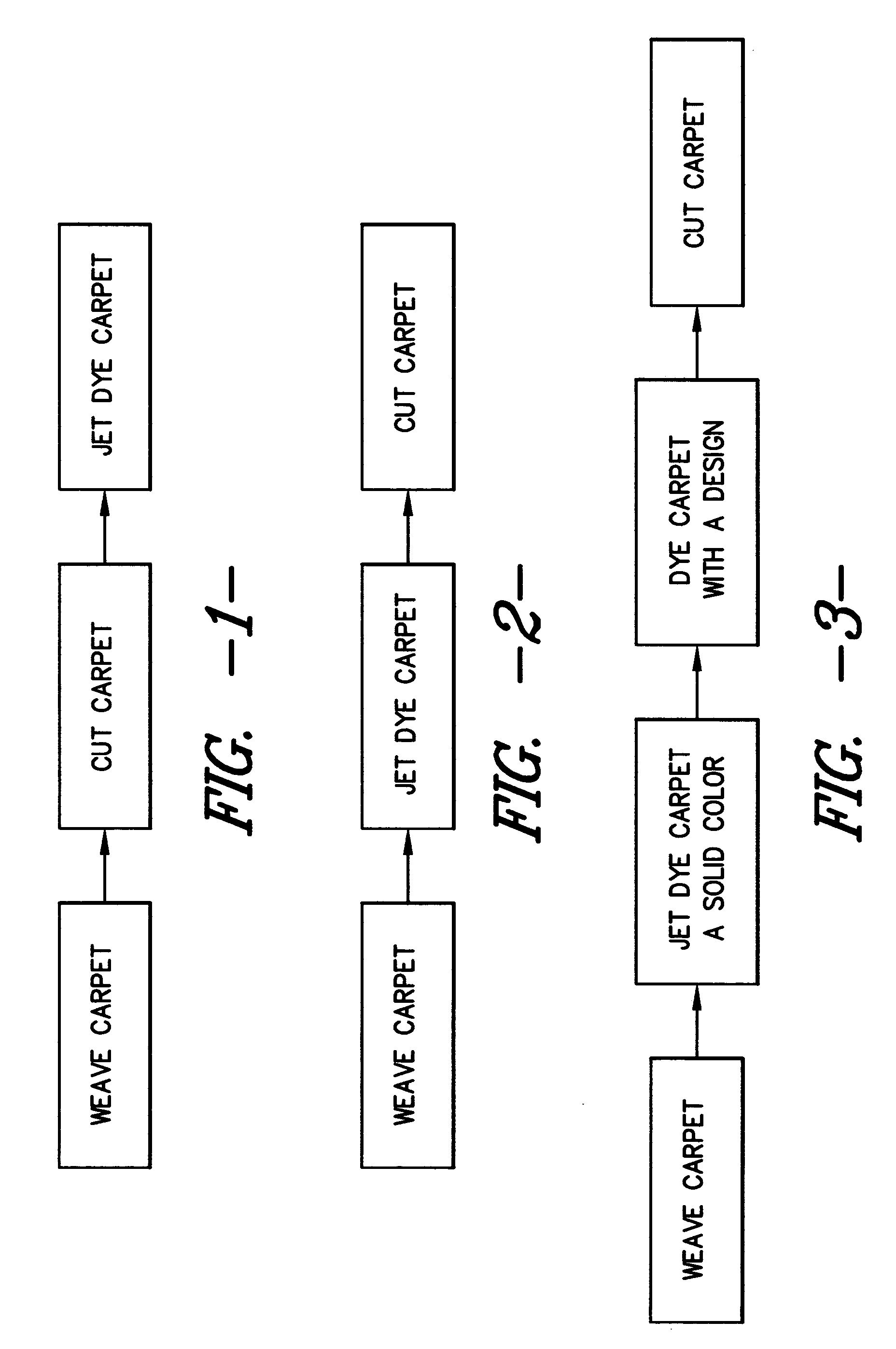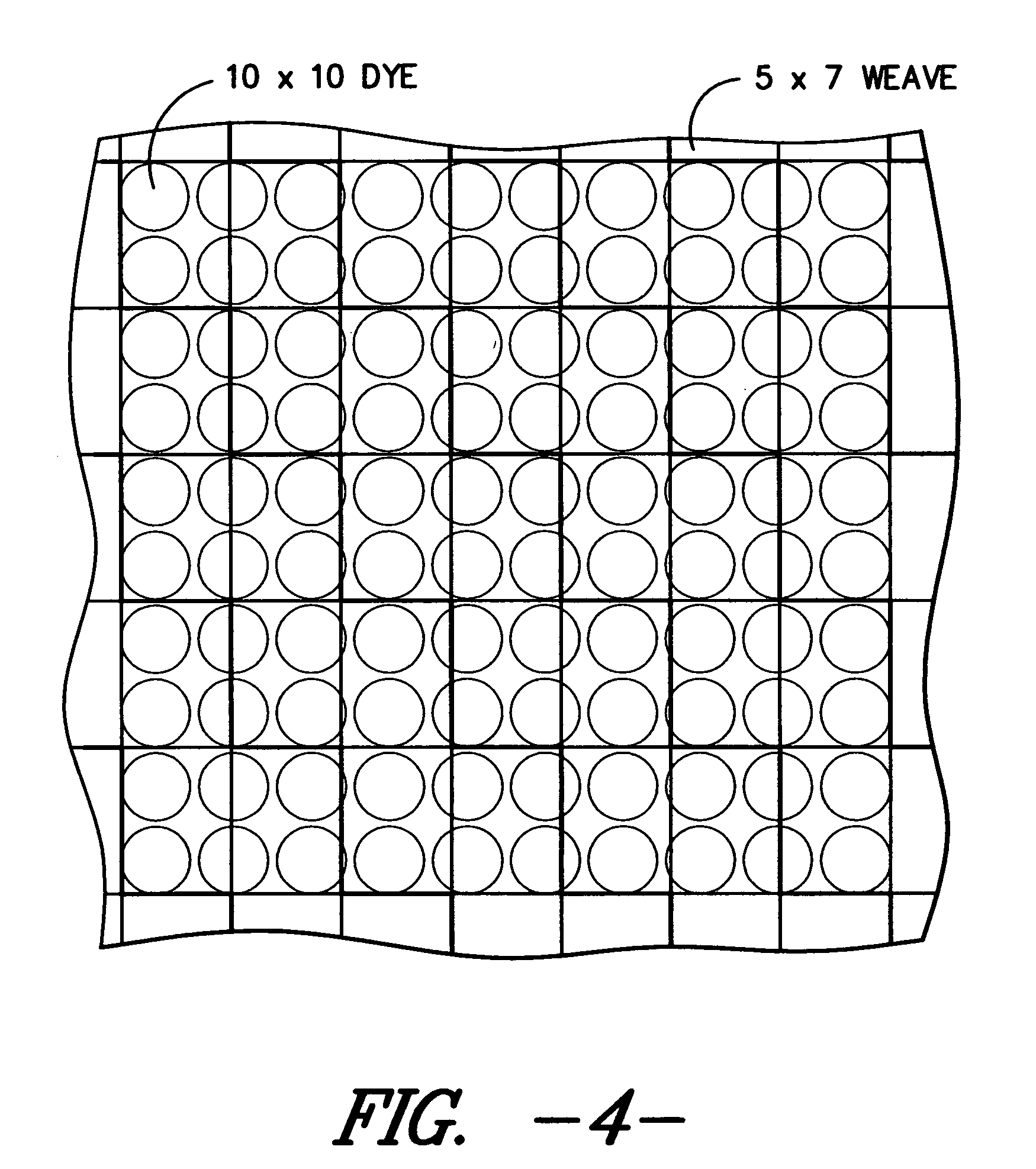Patterned carpet and method
a carpet and patterned technology, applied in the field of patterned carpet and method, can solve the problems of difficult to turn designs at 90° on the carpet web, the same design cannot be created on the same run on the woven loop or cut-loop construction without stopping the loom, etc., to achieve the effect of maximizing the utilization of the carpet base and improving efficiency
- Summary
- Abstract
- Description
- Claims
- Application Information
AI Technical Summary
Benefits of technology
Problems solved by technology
Method used
Image
Examples
Embodiment Construction
[0042] In accordance with at least one embodiment of the present invention, the white woven substrate may be formed of 2 ply yarn (2 / 56 means 56 yards to the oz), 100% wool, 100% nylon or other post dyeable synthetic and / or natural yarn or blend such as 80% nylon, 20% wool, or the like, and have a weave construction of 7×4.5, 7×5, 7×6, 7×7, 7×8, 7×9, 7×10, 7×12, etc., and may be woven from a white yarn or a solid colored yarn which can be dyed or printed (over dyed or over printed) to produce the final effect. For example, when a white yarn is used to produce a white woven carpet substrate, the background color of the rug is printed along with the design or pattern if that color is not white. Alternatively, if the yarn is a dyed or colored yarn (solution dyed, yarn dyed, naturally colored, or the like) then the design or pattern is printed thereon, but the background color is already created by the yarn itself. It is preferred to use white or a light off white color yarn.
[0043] Wit...
PUM
 Login to View More
Login to View More Abstract
Description
Claims
Application Information
 Login to View More
Login to View More - R&D
- Intellectual Property
- Life Sciences
- Materials
- Tech Scout
- Unparalleled Data Quality
- Higher Quality Content
- 60% Fewer Hallucinations
Browse by: Latest US Patents, China's latest patents, Technical Efficacy Thesaurus, Application Domain, Technology Topic, Popular Technical Reports.
© 2025 PatSnap. All rights reserved.Legal|Privacy policy|Modern Slavery Act Transparency Statement|Sitemap|About US| Contact US: help@patsnap.com



